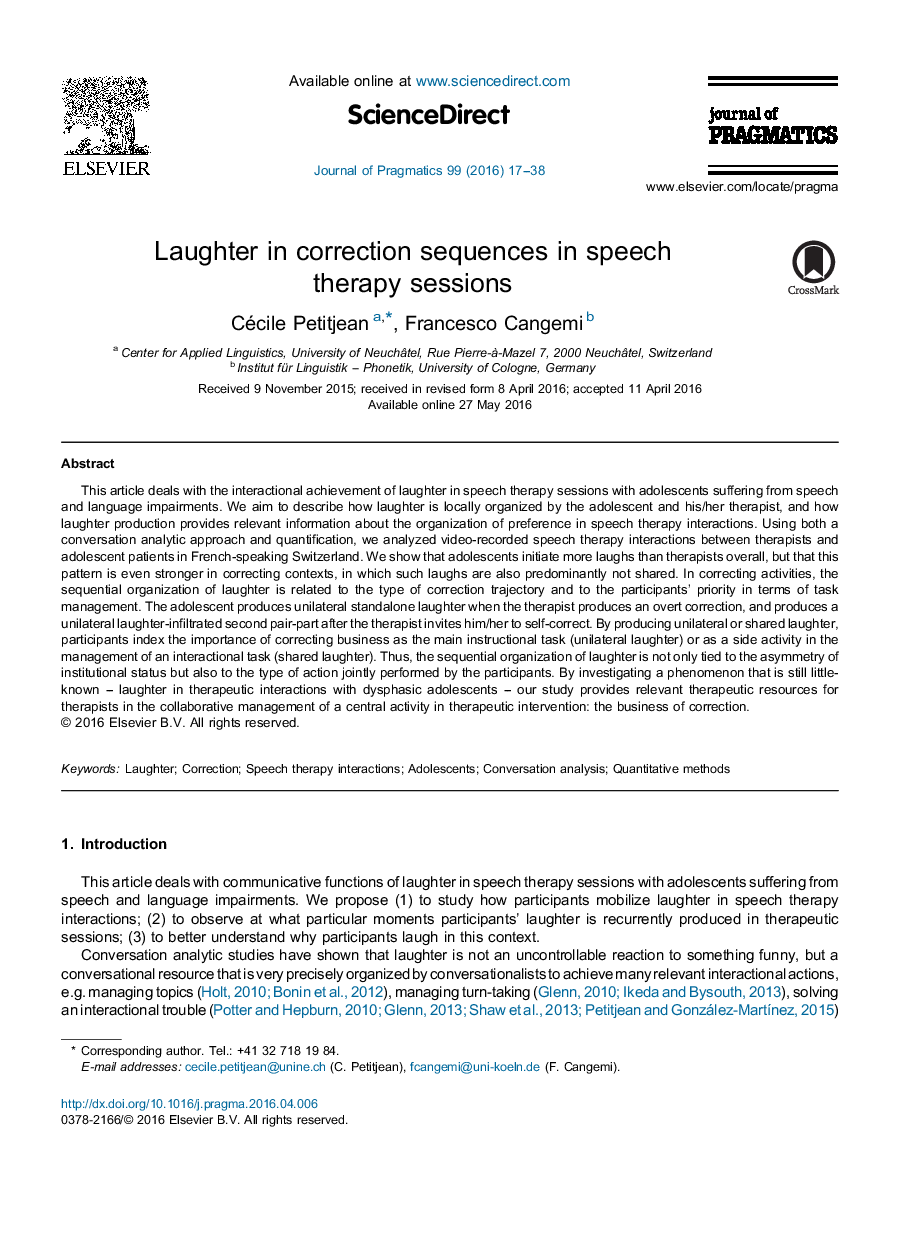| کد مقاله | کد نشریه | سال انتشار | مقاله انگلیسی | نسخه تمام متن |
|---|---|---|---|---|
| 932465 | 1474701 | 2016 | 22 صفحه PDF | دانلود رایگان |
• Laughter plays an important role in speech therapy interactions.
• Dysphasic adolescents initiate more laughs than therapists.
• This pattern is stronger in correction sequences, with mostly solo laughter.
• Sequentiality of laughter is related to correction type and task management.
• Analyses are based on a combination of qualitative and quantitative methods.
This article deals with the interactional achievement of laughter in speech therapy sessions with adolescents suffering from speech and language impairments. We aim to describe how laughter is locally organized by the adolescent and his/her therapist, and how laughter production provides relevant information about the organization of preference in speech therapy interactions. Using both a conversation analytic approach and quantification, we analyzed video-recorded speech therapy interactions between therapists and adolescent patients in French-speaking Switzerland. We show that adolescents initiate more laughs than therapists overall, but that this pattern is even stronger in correcting contexts, in which such laughs are also predominantly not shared. In correcting activities, the sequential organization of laughter is related to the type of correction trajectory and to the participants’ priority in terms of task management. The adolescent produces unilateral standalone laughter when the therapist produces an overt correction, and produces a unilateral laughter-infiltrated second pair-part after the therapist invites him/her to self-correct. By producing unilateral or shared laughter, participants index the importance of correcting business as the main instructional task (unilateral laughter) or as a side activity in the management of an interactional task (shared laughter). Thus, the sequential organization of laughter is not only tied to the asymmetry of institutional status but also to the type of action jointly performed by the participants. By investigating a phenomenon that is still little-known – laughter in therapeutic interactions with dysphasic adolescents – our study provides relevant therapeutic resources for therapists in the collaborative management of a central activity in therapeutic intervention: the business of correction.
Journal: Journal of Pragmatics - Volume 99, July 2016, Pages 17–38
